 |
 |
| |
Wayback Sound Machine/Radio Terramoto
|
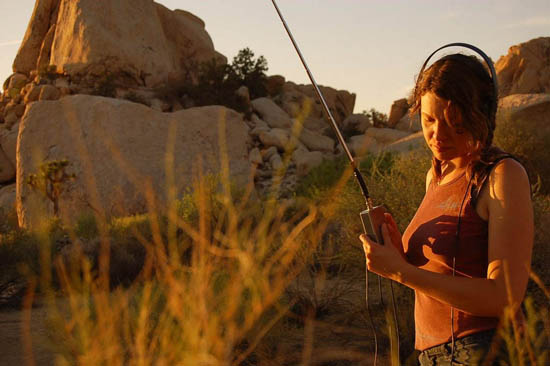
|
excerpt from article
Two years ago I found myself in a location and situation that brought to mind the connections between sound and memory, which lead to considerations about sound and history. Upon thought and research, then experiments within my own practice, I have since been exploring what can come from recreating or creating sound from back in time. I have been excited about what this research has leant to my own work, as well as meeting people and exploring work of other disciplines exploring a similar line.
|
publications
Full length article published in the annual scientific publication World Forum for Acoustic Ecology Soundscape, the Journal for Acoustic Ecology
Sounding Out! Sound Studies Journal
World Forum for Acoustic Ecology: Soundscape Journal 2014
|
Presentations
Musique et Ecologies du Son/ Music and Ecologies of Sound: Theoretical and Practical Projects for the Listening of the World
Universit Paris
May 2013
Symposium on Acoustic Ecology
University of Kent, United Kingdom
November 2013

|
projects
Radio Terramoto
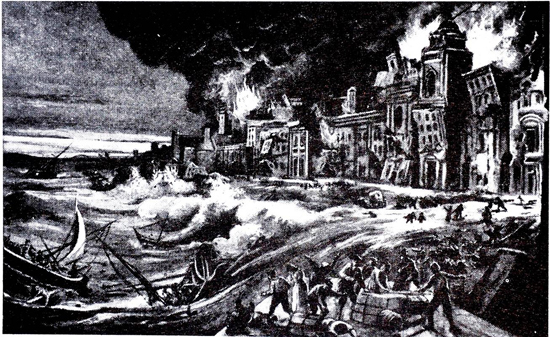
Creators: Jeff Cain (US), Rui Costa (PT), Maile Colbert (US, PT)
synopsis
“Radio Terramoto” is a radio transmission from All Saints Day, 1755. We are not sure how or why the forty minutes were recorded, but having been discovered accidently it has proven to be an important record to the experience of the people caught in the Great Lisbon Earthquake. We follow our mysterious ghost recorder as starting in the Convento do Carmo where the people were gathered for the All Saints Day Mass. The first wave hits and the convent crumbles. As people run to the river, we follow their path as the buildings around us burst into fire and collapse. Finally reaching the river, only to be greeted by the water pulling out, revealing flopping fish and shipwrecks, pulling towards the ocean to fuel the giant wave that would final overcome our poor recorder. From here the transmission stops.
Audio documentation
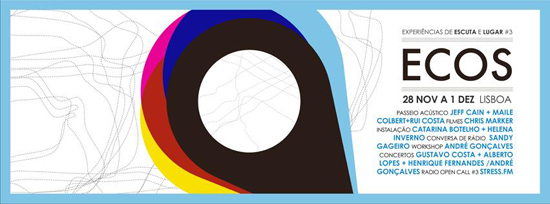
First presented at Ecos/Echoes
Through the Osso Cultural Association and the 2013 Lisbon Trienalle
|
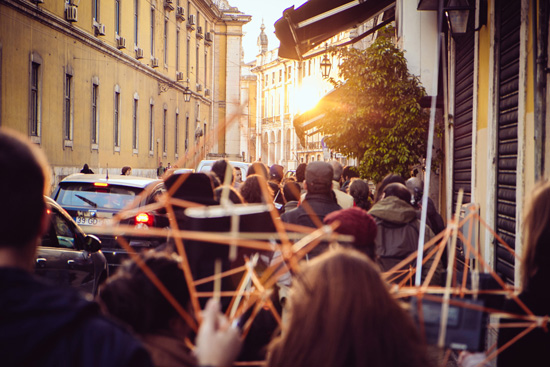
radio soundwalk abstract
“Radio Terramoto” is a radio transmission soundwalk research and art project based on the idea of listening to sound from a past historical event, in this case the Great Lisbon Earthquake on All Saints Day, 1755. This is an audience immersive event in which a procession made up of the creators and audience follow a path from the Convento do Carmo down to the river in Lisbon, Portugal. The sound design is based on research on the earthquake, using documents of both first-hand experiences and the first seismic and “earthquake” proof architecture that came after what may be the largest earthquake recorded in history, which destroyed a quarter of the city, from 10,000 to 100,000 lived, and beget consequential tsunamis and fires. The creators walk with the audience bearing a transmitter, the audience carry radios and cell phones tuned into the specific frequency of the transmission. The sound weaves between the present and the past, and it is from this experience that we are interested in researching. The project and research looks into the question, what can listening to the past reveal about the now, both in artistic practice and scientific research?
Lisbon raio soundwalk on Soudcloud
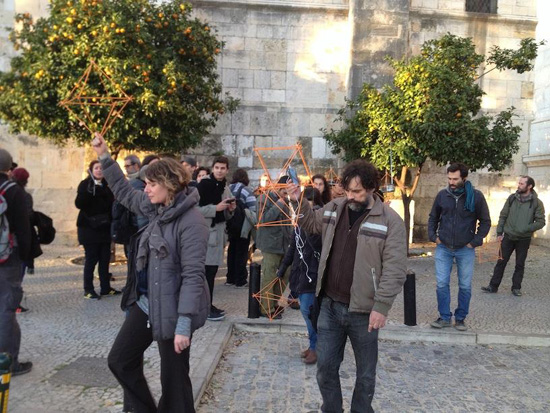
|
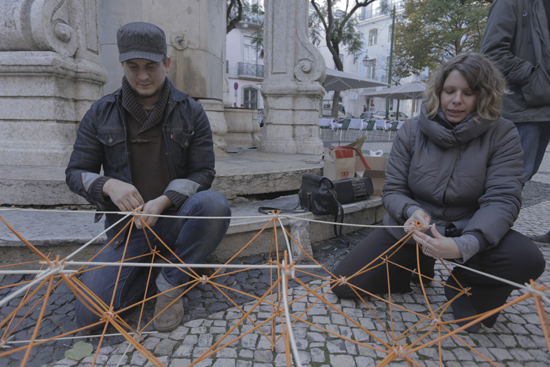

|
Radio Transmission Soundwalk: "Radio Terramoto" at the Invisible Places: Sounding Cities symposium in Viseu
“Radio Terramoto” is a radio transmission soundwalk research and art project based on the idea of listening to sound from a past historical event, in this case the Great Lisbon Earthquake on All Saints Day, 1755. This is an audience immersive event in which the original procession made up of the creators and audience followed a path from the Convento do Carmo down to the river in Lisbon, Portugal. For the Invisible Places: Sounding Cities Symposium, we will transpose the original sound from the Lisboa path to follow a similar path in Viseu (an area hardly effected by the earthquake and its following distasters), from the Sé to the Rio Pavia. Thus we bring in a transposition of not just time, but of geography as well.
The sound design is based on research on the earthquake, using documents of both first-hand experiences and the first seismic and “earthquake” proof architecture that came after what may be the largest earthquake recorded in history, which destroyed a quarter of the city, from 10,000 to 100,000 lived, and beget consequential tsunamis and fires. The creators walk with the audience bearing a transmitter, the audience carry radios and cell phones tuned into the specific frequency of the transmission.
The original “Radio Terramoto” soundwalk in Lisbon included hand-held sculptural octahedra created using a geometric framing system designed by Jake Dotson, assembled as a singular form approximating a Pombaline cage, the first modern earthquake resistant architecture. The radio transmitter, and other key electrical devices were suspended in these 1 foot3 (30 cm3) octahetra made of brightly colored sticks of wood held together with friction and tension. The large cage broke apart into the individual octahedra to aid in the transportation of equipment and in providing a visual wayfinding aide for the participants.
The project and research looks into the question, what can listening to the past reveal about the now, both in artistic practice and scientific research? The sound weaves between the present and the past, and it is from this experience that we are interested in researching. The project and research looks into the question, what can listening to the past reveal about the now, both in artistic practice and scientific research? |
 |
 |
|







